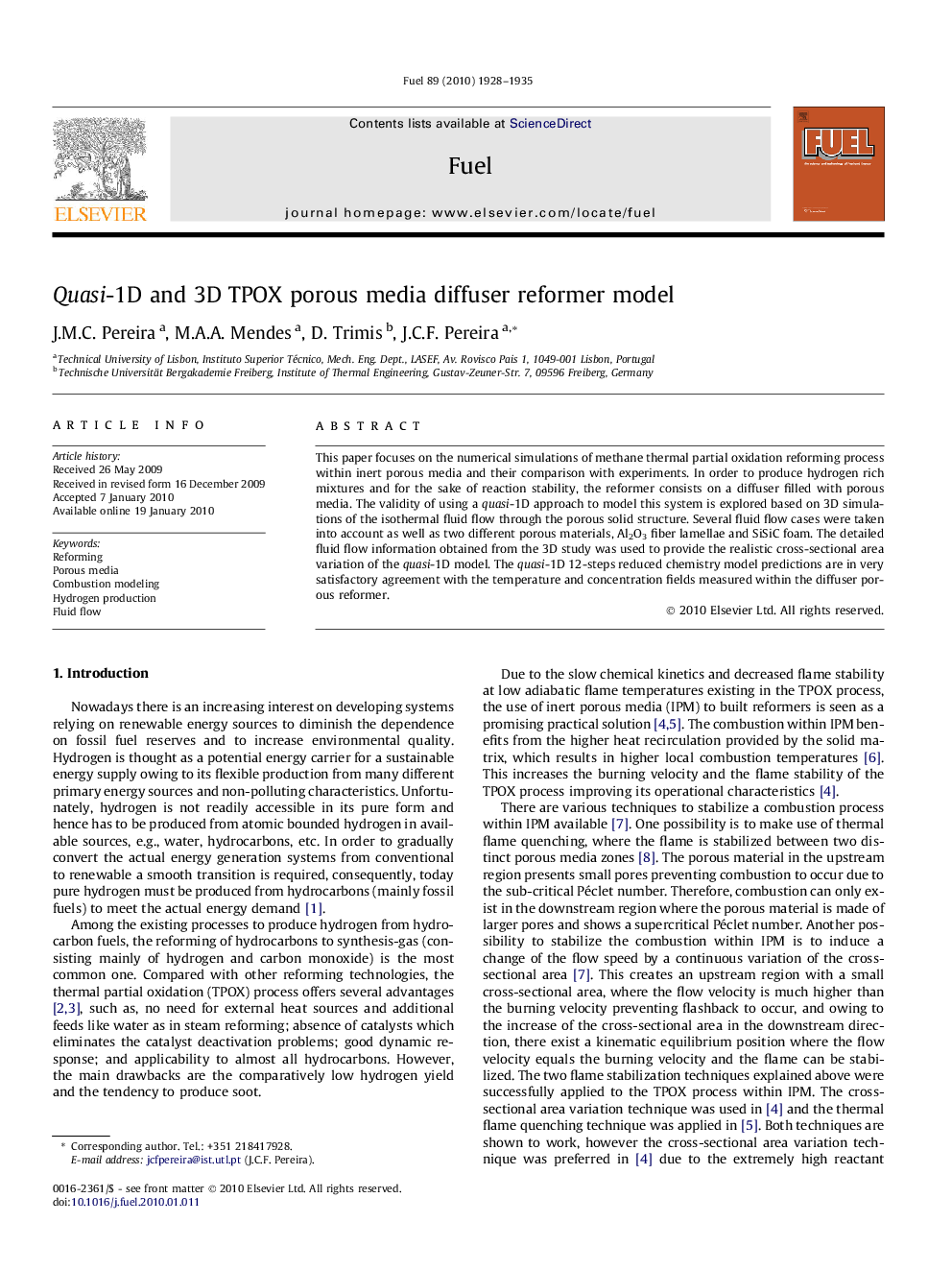| Article ID | Journal | Published Year | Pages | File Type |
|---|---|---|---|---|
| 207161 | Fuel | 2010 | 8 Pages |
This paper focuses on the numerical simulations of methane thermal partial oxidation reforming process within inert porous media and their comparison with experiments. In order to produce hydrogen rich mixtures and for the sake of reaction stability, the reformer consists on a diffuser filled with porous media. The validity of using a quasi-1D approach to model this system is explored based on 3D simulations of the isothermal fluid flow through the porous solid structure. Several fluid flow cases were taken into account as well as two different porous materials, Al2O3 fiber lamellae and SiSiC foam. The detailed fluid flow information obtained from the 3D study was used to provide the realistic cross-sectional area variation of the quasi-1D model. The quasi-1D 12-steps reduced chemistry model predictions are in very satisfactory agreement with the temperature and concentration fields measured within the diffuser porous reformer.
